.xlsx
Type of resources
Available actions
Topics
Keywords
Contact for the resource
Provided by
Years
Formats
Representation types
Update frequencies
Scale
-

The spreadsheet gathers the data collected during a brine:CO2 flow-through experiment conducted on a synthetic sandstone core sample to present the capabilities of a novel 'multiflow experimental rig for CO2 experiments' designed and assembled at the National Oceanography Centre, Southampton. The test was configured to assess geophysical monitoring techniques in shallow tight (North Sea-like) CO2 storage sandstone reservoirs. The tests were conducted in the rock physics laboratory at the National Oceanography Centre, Southampton, during 2015, as part of the DiSECCS project with funding from the United Kingdom's Engineering and Physical Sciences Research Council (EPSRC grant EP/K035878/1) and the Natural Environment Research Council (NERC). The experiment was a steady state brine-CO2 flow-through test to replicate CO2 geosequestration conditions and evaluate geophysical monitoring techniques. The confining and pore pressure conditions were similar to those estimated for shallow North Sea - like storage reservoirs, but simulating inflation/depletion cyclic scenarios for increasing brine:CO2 fractional flow rates. The data include ultrasonic P- and S-wave velocities and their respective attenuation factors, axial strains, and electrical resistivity; also relative permeability to both fluids (CO2 and brine) is displayed as a function of pore volume times, associated to increasing CO2 to brine contents in the sample.
-

Particle Size Analysis (PSA) and organic carbon content data from marine sediment sampling of two plots within the Trevose Box off south-west England between 14 - 18 April 2023 before and after fishing. This DEFRA funded FISP (Fisheries Industry Science Partnerships scheme) project aimed to understand the acute effects of scallop dredging and beam trawling on seabed carbon. The project was led by Bangor University in collaboration with Imperial College London, CEFAS, Western Fish Producers Organisation and the South Western Fish Producer Organisation. The study was conducted in two areas offshore south-west England, UK. The areas were within the Trevose box, which is a management area closed to bottom fishing for the months of January, February and March each year. This allowed us to sample areas which had not been exposed to fishing immediately before our sampling which would reduce the chance of seeing any effect from our experimental fishing. One plot was designated an area that would be experimentally fished by a beam trawler, and another by a scallop dredger (Figure 1). The plots were chosen to minimise differences in depth, seabed habitat, sediment type, wave energy and tidal currents within and between them. Both were chosen where their respective types of fishing gear had been used previously, although scallop dredging has been less common in this area in recent years. The sampling from the RV Prince Madog and experimental fishing from the fishing vessels took place between 14 – 18th April 2023. Before any fishing activity took place, grab sampling was conducted in the dredge plot and in the beam trawl plot that would be later fished to varying amounts, which will be referred to as ‘Times fished’ or ‘fishing intensity’. A 0.1 m2 Day grab was used. When the day grab was onboard two cores were used to subsample the grab sample as deep as possible, these were then sliced in 1 cm intervals and frozen onboard for later carbon analysis. A homogenised sample from the day grab was also taken for Particle Size Analysis. After the ‘Before’ grab samples were taken, a beam trawler and scallop dredger towed their gear along the sampled lanes in each respective plot. The 'After’ samples were taken after that fishing activity. Please see report for full details on how the PSA and organic content values were determined. Whitton, T.A., Austin, M., Newbould, A., Kennedy, H., Allender, S., Cavan, E., Parker, R., North, C., Hatchman, J., Hiddink, J.G. (2024) The impact of mobile demersal fishing on blue carbon in seabed sediments. Report to DEFRA. https://research.bangor.ac.uk/portal/en/researchoutputs/the-impact-of-mobile-demersal-fishing-on-blue-carbon-in-seabed-sediments(1fa1845a-6669-4b5b-83e1-234a6eafc75c).html
-
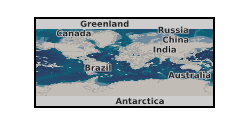
The data is collected in North China Electric Power University (NCEPU) on a 1-inch bore, gas-liquid two-phase, high pressure (up to 72bar), ambient temperature CO2 flow test rig from 19th May to 3rd June 2016. Single phase gas and liquid information are provided by Coriolis meter and mixed together. Then a vertical Coriolis meter is used to measure the two-phase mixture together with a DP transmitter measuring differential pressure across the vertical Coriolis meter under test. UKCCSRC Call 2 project: CO2 Flow Metering through Multi-Modal Sensing and Statistical Data Fusion. Grant number: UKCCSRC-C2-218. Published papers: 1) Mass flow measurement of two-phase carbon dioxide using Coriolis flowmeters (https://doi.org/10.1109/I2MTC.2017.7969891). 2) Mass flow measurement of gas-liquid two-phase CO2 in CCS transportation pipelines using Coriolis flowmeters (https://doi.org/10.1016/j.ijggc.2017.11.021).
-
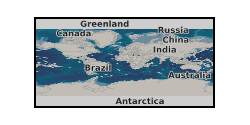
Data derived from UKCCSRC Call 2 Project C2-181. The journal article can be found at https://doi.org/10.1016/j.ijhydene.2017.05.222. The sorption enhanced steam reforming (SE-SMR) of methane over the surface of 18 wt. % Ni/Al2O3 catalyst and using CaO as a CO2-sorbent is simulated for an adiabatic packed bed reactor. The developed model accounts for all the aspects of mass and energy transfer, in both gas and solid phase along the axial direction of the reactor. The process was studied under temperature and pressure conditions used in industrial SMR operations. The simulation results were compared with equilibrium calculations and modelling data from literature. A good agreement was obtained in terms of CH4 conversion, hydrogen yield (wt. % of CH4 feed), purity of H2 and CO2 capture under the different operation conditions such as temperature, pressure, steam to carbon ratio (S/C) and gas mass flux. A pressure of 30 bar, 923 K and S/C of 3 can result in CH4 conversion and H2 purity up to 65% and 85% respectively compared to 24% and 49% in the conventional process.
-
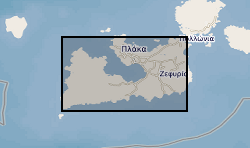
Summary of semi-quantitative whole-rock XRD analysis of hydrothermal alteration across the island of Milos, Greece. The samples were acquired during numerous field visits between 2010 and 2018 by the British Geological Survey and GW4+ Doctorial Training Partnership (NE/L002434/1). The data were acquired using a PANAlytical X’Pert Pro diffractometer at the British Geological Survey, Keyworth, UK. These data were primarily used to identify mineral phases to improve our understanding of regional and local paleo-hydrothermal activity. This may be useful within the metallic and industrial mineral mining sector and associated researchers. The data includes grid references (± 5 m), field observations and instrument running conditions. Samples from 2010 are supported by a grant award from the Natural Environment Research Council (GA/09F/139). Samples from 2016 - 2018 are supported by the GW4+ Doctoral Training Partnership (NE/L002434/1) grant award GA/09F/139 – RMS E3557, and the British Geological Survey’s University Funding Initiative (BUFI S345).
-
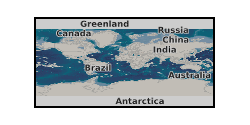
NERC grant NE/R013535/1. Here we present the dataset collected during a brine-CO2 flow-through test using a synthetic sandstone with oblique fractures, performed under realistic reservoir conditions stress. We monitored geophysical, mechanical and transport properties, for drainage and imbibition conditions, representative of the injection and post-injection stages of the CO2 storage process. We collected ultrasonic P- and S-wave velocities and their respective attenuation factors, axial and radial strains, electrical resistivity, pore pressure, temperature and brine and CO2 partial flows (from which relative permeability was later calculated).
-
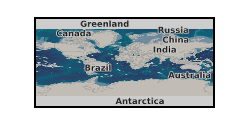
Fiscal metering could face several challenges during CO2 transport by pipelines due to the unusual physical properties of CO2 and CO2 mixtures. Coriolis flowmeters are an options to measure CO2 accurately in transport pipelines. However, the presence of impurities can affect the performance of the flowmeter. Therefore, the performance of a Coriolis flowmeter was evaluated using CO2 fluid with impurities in a mass flow-rig designed based on the gravimetric calibration in start / stop operations. In each test, the mass recorded by the Coriolis flowmeter was compared to the mass collected in the receiving facilities and measured using high accurate balance in order to obtain the relative deviation of the test. During the tests, in addition to the mass and volume flow rate, the operational pressure and temperature as well as velocity and density were recorded. The series of tests were conducted using different fluids, including: pure N2 (validation tests), pure CO2 (reference tests), pre-combustion mixture, post-combustion mixture, Oxyfuel-I mixture and Oxyfuel-II mixture. The recorded data as well as recorded and measured masses are available in the provided excel files for each investigated fluid. Grant number: UKCCSRC-C2-201
-

The spreadsheet gathers the data collected during a brine:CO2 flow-through experiment conducted on a weakly-cemented synthetic sandstone core sample using the multiflow experimental rig for CO2 experiments, designed and assembled at the National Oceanography Centre, Southampton. The test was configured to assess geophysical monitoring and deformation of reservoirs subjected to CO2 injection in shallow weakly-cemented (North Sea-like, e.g., Sleipner) CO2 storage sandstone reservoirs. The tests was conducted in the rock physics laboratory at the National Oceanography Centre, Southampton, during 2015-2016, as part of the DiSECCS project with funding from the United Kingdom’s Engineering and Physical Sciences Research Council (EPSRC grant EP/K035878/1) and the Natural Environment Research Council (NERC). The experiment was a steady state brine-CO2 flow-through test in which realistic shallow CO2 geosequestration conditions were simulated, to related geophysical signatures to the hydrodynamic and geomechanical behaviour of the rock sample. The confining and pore pressure conditions were similar to those estimated for shallow North Sea Sleipner-like, storage reservoirs, but simulating inflation/depletion cyclic scenarios for increasing brine:CO2 fractional flow rates. The data include ultrasonic P- and S-wave velocities and their respective attenuation factors, axial, radial and volumetric strains, and electrical resistivity; also relative permeability to both fluids (CO2 and brine) is displayed as a function of pore volume times, associated to increasing CO2 to brine contents in the sample.
-
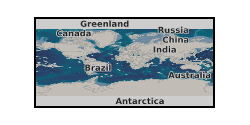
Dupont, Valerie (2017) Data associated with "Chemical equilibrium analysis of hydrogen production from shale gas using sorption enhanced chemical looping steam reforming" in Fuel Processing Technology. University of Leeds. Data file containing datasets used to generate the figures and tables in the paper. [Dataset] https://doi.org/10.5518/149. [Publication] http://doi.org/10.1016/j.fuproc.2017.01.026
-

The spreadsheet gathers the data collected during an experiment conducted on a Utsira Sand formation core sample to complements and constrains existing geophysical monitoring surveys at Sleipner and, more generally, improves the understanding of shallow weakly-cemented sand reservoirs. The tests were conducted in the rock physics laboratory at the National Oceanography Centre, Southampton, during 2016, as part of the DiSECCS project with funding from the United Kingdom’s Engineering and Physical Sciences Research Council (EPSRC grant EP/K035878/1) and the Natural Environment Research Council (NERC). The experiment was a steady state brine-CO2 flow-through test to simultaneously evaluate ultrasonic waves, electrical resistivity (converted into pore fluid distribution) and mechanical indicators during CO2 geosequestration in shallow weakly-cemented reservoirs. The confining and pore pressure conditions were similar to those estimated for Sleipner (North Sea – like storage reservoirs), but simulating inflation/depletion cyclic scenarios for increasing brine:CO2 fractional flow rates. The data include primary ultrasonic wave velocities and attenuation factors, axial and radial strains, and electrical resistivity. Also, we provide a velocity-saturation relationship of practical importance to CO2 plume monitoring, obtained from the inversion of ultrasonic velocity and attenuation data and extrapolation of results to field-scale seismic-frequencies using a new rock physics theory. The dataset is linked to this publication: http://www.sciencedirect.com/science/article/pii/S1750583617306370.
 NERC Data Catalogue Service
NERC Data Catalogue Service